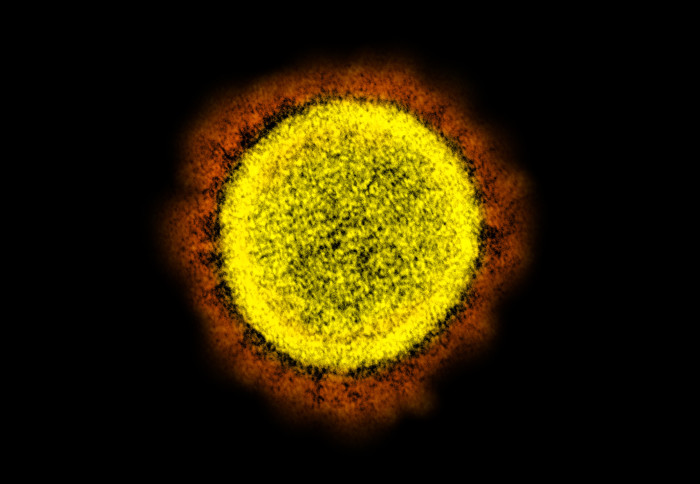Coloured compounds may help coronavirus evade antibodies
by Ryan O'Hare

Compounds which bind to the spike protein block antibodies from neutralising SARS-CoV-2
Pigments in the body which give bruises their green and yellow hues may help coronaviruses hide from the immune system.
Researchers have uncovered how two coloured compounds, called biliverdin and bilirubin, bind to the spike proteins on the surface of the SARS-CoV-2 coronavirus, effectively blocking antibodies from binding to the virus and dampening the body’s immune response.
The authors, from the Francis Crick Institute, Imperial College London, Kings College London and University College London, believe the findings could help explain why some COVID-19 patients can become severely ill despite having high levels of antibodies against the virus.
The study is published in the journal Science Advances.
Biliverdin and bilirubin are compounds found naturally in the body. They are released during the breakdown of haem, the red-coloured compound which clings onto oxygen molecules in red blood cells. The compounds can be seen in the changing colour of bruises, as haem is broken down first to biliverdin (green) and then to bilirubin (yellow).
Spike protein binding
In the study, researchers at the Crick were involved in the development of tests that see if a person has been exposed to the virus, and discovered that the SARS-CoV-2 spike protein strongly binds to biliverdin, giving the proteins an unusual green colouration.
Working with teams at Imperial, UCL and Kings, they found that this molecule reduced antibody binding to the spike.
Using blood serum and antibodies from people previously infected with SARS-CoV-2, they found that biliverdin could suppress the human antibodies binding to the spike by as much as half (30-50%), with some antibodies becoming ineffective at neutralising the virus.

To find out the mechanism at work, the team used cryo-electron microscopy and X-ray crystallography to look in detail at the interactions between the spike, the antibodies and biliverdin.
They found that biliverdin attaches to the spike N-terminal domain (NTD) and stabilises it so that the spike is not able to ‘open up’ and expose parts of its structure. This means that some antibodies are not able to access their target sites and so cannot bind to and neutralise the virus.
Annachiara Rosa, first author and postdoctoral training fellow at the Crick, said: “When SARS-CoV-2 infects a patient’s lungs it damages blood vessels and causes a rise in the number immune cells. Both of these effects may contribute to increasing the levels of biliverdin and bilirubin in the surrounding tissues.
"And with more of these molecules available, the virus has more opportunity to hide from certain antibodies. This is a really striking process, as the virus may be benefiting from a side-effect of the damage it has already caused.”
A new target for antibodies
The researchers aim to expand on the work, including measuring levels of biliverdin and other haem metabolites in patients with COVID-19. They also hope to explore if it is possible to hijack the binding site used by biliverdin to potentially find new ways to target the virus.
Professor Peter Cherepanov, senior author and a group leader of the Chromatin structure and mobile DNA Laboratory at the Crick, says: “In the first months of the pandemic, we were extremely busy churning out viral antigens for SARS-CoV-2 tests. It was a race, as these tests were urgently needed.
"When we finally found the time to study our green proteins, we expected a mundane answer. Instead, we were astonished to discover a new trick the virus uses to avoid antibody recognition. This is a result of a collaborative effort of several amazing teams working at the Crick and the three partner universities, led purely by scientific curiosity.”
Professor Richard Tedder, from the Department of Infectious Disease at Imperial, said: “The engineering of this protein by Peter Cherepanov and the resulting collaboration has produced an antigen which is dominant in both our benchmark hybrid DABA and in our capture assays for the detection of antibody to SARS-CoV-2, this has been of great importance.”
-
This article is based on materials from The Francis Crick Institute.
‘SARS-CoV-2 can recruit a haem metabolite to evade antibody immunity’ by Rosa, A. et al. is published in Science Advances. DOI: 10.1126/sciadv.abg7607
Article text (excluding photos or graphics) © Imperial College London.
Photos and graphics subject to third party copyright used with permission or © Imperial College London.
Reporter
Ryan O'Hare
Communications Division